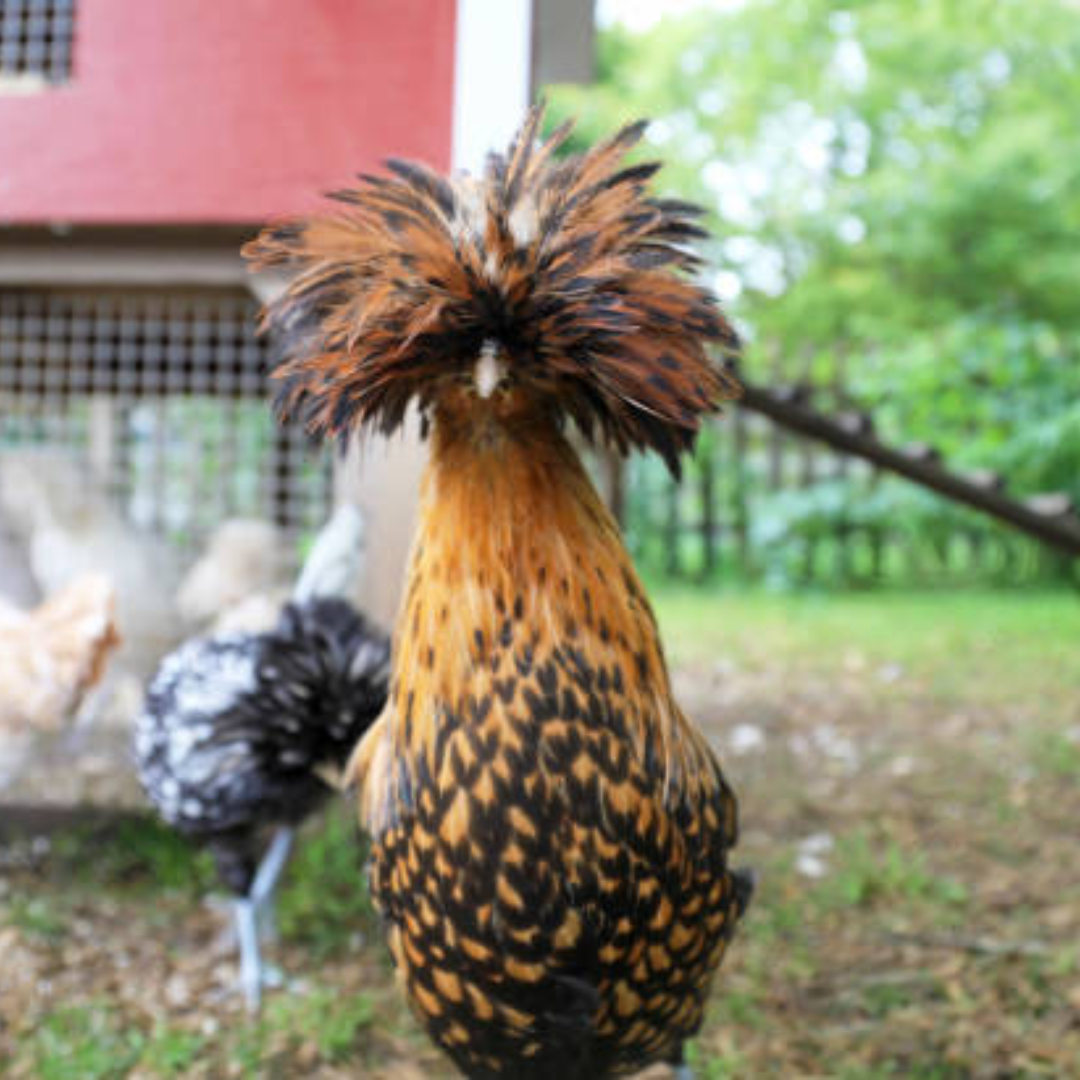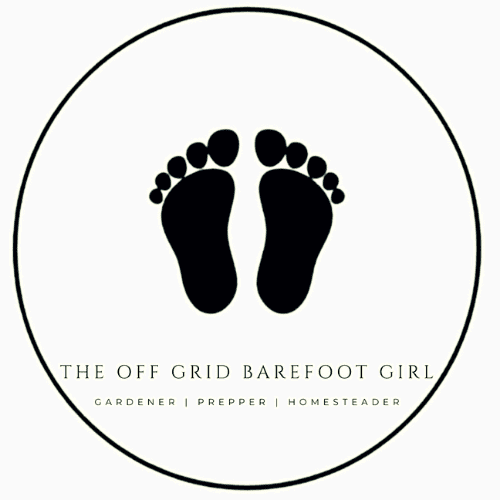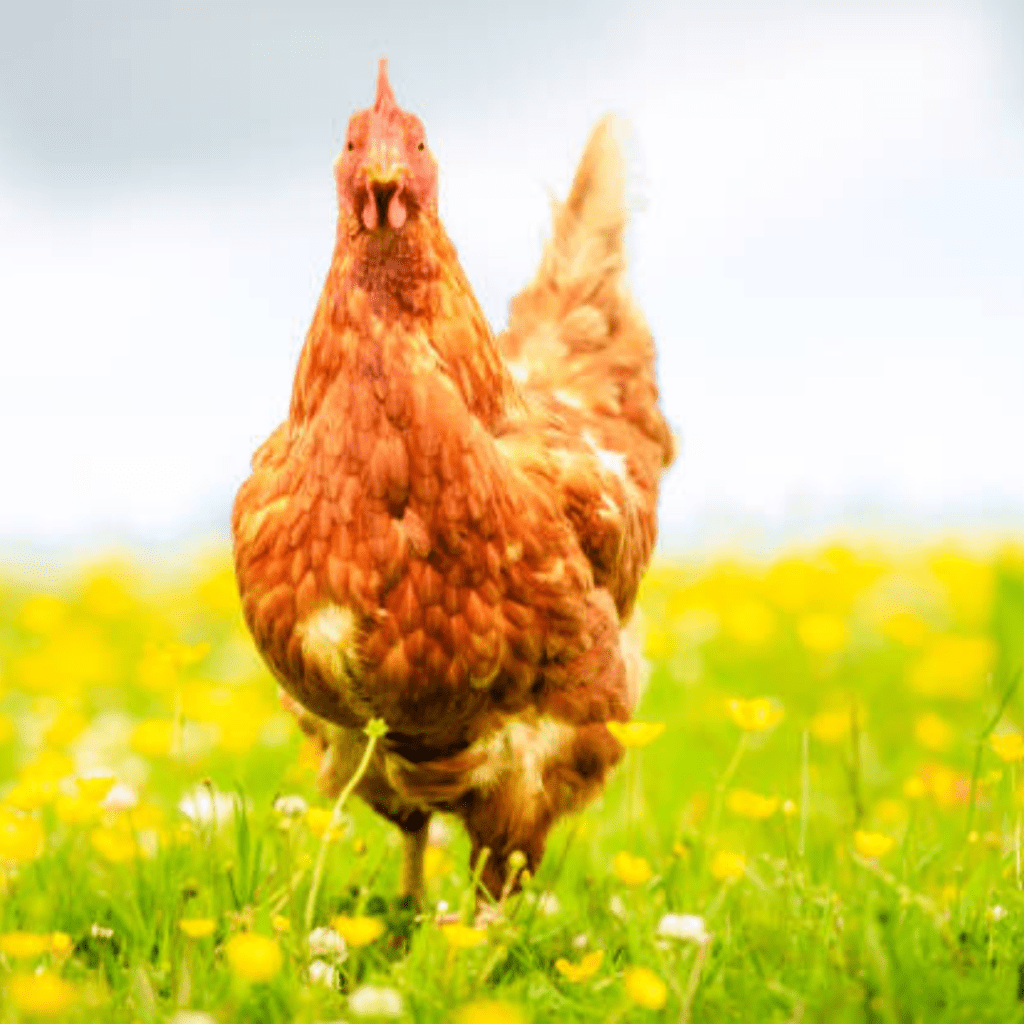Backyard chicken coop.
I’ve always been passionate about self-sufficiency and finding ways to live more sustainably, so starting my backyard chicken journey just felt like the next natural step. Raising chickens will allow me to provide fresh, healthy eggs for my family, reduce waste by using kitchen scraps as feed, and contribute to a more sustainable lifestyle.
It’s not just about the eggs, though; it’s about learning how to care for animals, how to maintain their space, and how to truly embrace the cycle of nature. This project is as much about connection to the land as it is about food, and I’m excited to share every step with you!
Growing Up with Chickens in Rural Ohio
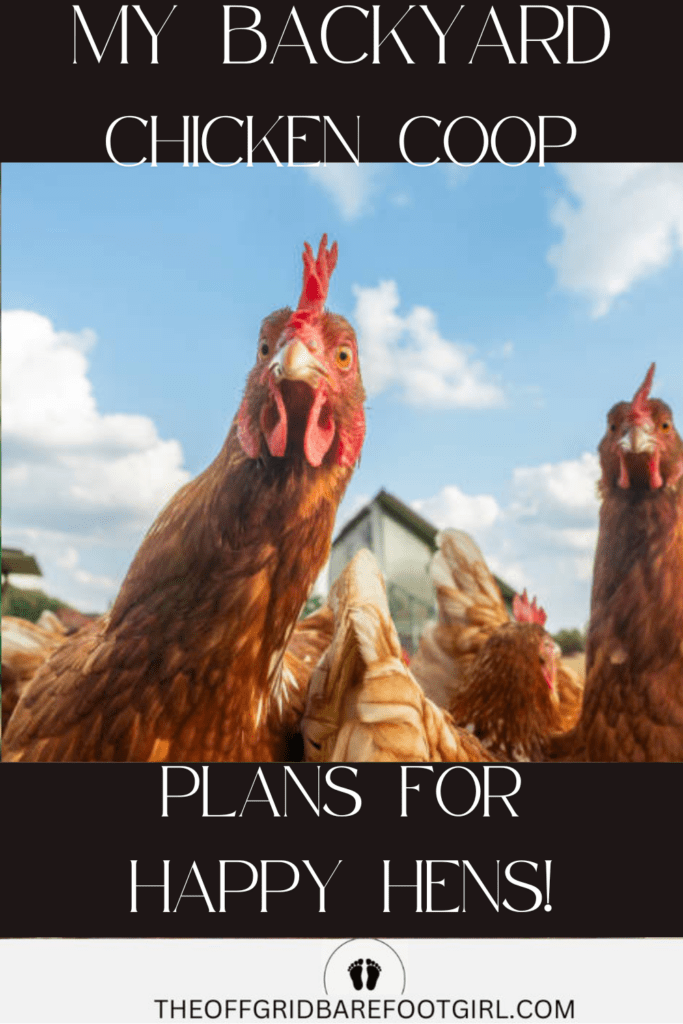
I grew up in rural Ohio, where my parents raised over 30+ chickens on our little homestead. Some of my earliest memories are of gathering warm eggs from the nesting boxes and watching our hens scratch around the yard.
My mom and dad taught me the importance of caring for animals, and I learned firsthand how rewarding it was to have a steady supply of fresh eggs. Those experiences stuck with me, and now, as I start my own backyard chicken journey, I can’t help but feel like I’m coming full circle—bringing a piece of my childhood into my own self-sufficient lifestyle.
We also raised sheep, a ram, bunnies, and quail. We also befriended forest animals like raccoons (they were so adorable and fun!). By the time I was a rowdy teen girl, my sisters and I used to tear up the homestead with a super fast and fun 3-wheeler. Those chickens were actually annoying back then because they were always in the way, but of course, that was my teenage mind at the time. However, I really did enjoy them growing up!
The Benefits of Raising Chickens for Fresh Eggs and Sustainability
One of the biggest perks of raising chickens is the fresh eggs. Nothing beats cracking open an egg from your own backyard—it’s fresher, tastier, and more nutritious than store-bought eggs. But it doesn’t stop there. Chickens are a fantastic addition to any sustainable lifestyle because they help reduce waste. I can use vegetable scraps and leftover food for their feed, and in return, they provide me with eggs, feathers, and even manure for composting.
Chickens also contribute to pest control by eating insects in the yard. By raising chickens, I’m creating a small, but mighty cycle of sustainability that benefits both my family and the environment.
How I’m Planning My Coop Using Pre-Made Options and Supplies from Amazon
As I began planning this project, I decided to use some pre-made options from Amazon to streamline the process and make my chicken coop planning easier. Instead of building everything from scratch, I’ve chosen a pre-built Large Metal Chicken Coop Run and a cute Evermeadow Wooden Playhouse that I plan to convert into a cozy chicken house. (PSST! I am not much of a builder! I am more of an assembler!)
These pre-made solutions give me the structure I need without the added stress of constructing everything myself. I’ve also picked out essential supplies like nesting boxes, chicken feeders, and waterers, all from Amazon, which will help set up my chickens for success from day one. Using these options saves me time, and I’m confident I’ll end up with a functional, comfortable coop that my hens will love!
What You’ll Learn as I Prepare for This Exciting Project
Throughout this exciting journey, I’ll be sharing all the details of my planning and preparations with you. From choosing the best supplies to setting up the perfect space for my chickens, I’ll be documenting the process every step of the way.
You’ll learn what goes into creating a functional chicken coop, how to make sure your hens are comfortable and happy, and even how to deal with some of the challenges that come with raising chickens.
Whether you’re looking to start your own backyard chicken adventure or just want to see how it’s done, I hope you’ll find the tips, advice, and inspiration you need to get started. This project is about more than just chickens—it’s about embracing a self-sufficient lifestyle, and I can’t wait to share it all with you!
This is a pinnable post. Tap or hover over any image in this post to pin to your Pinterest Boards.
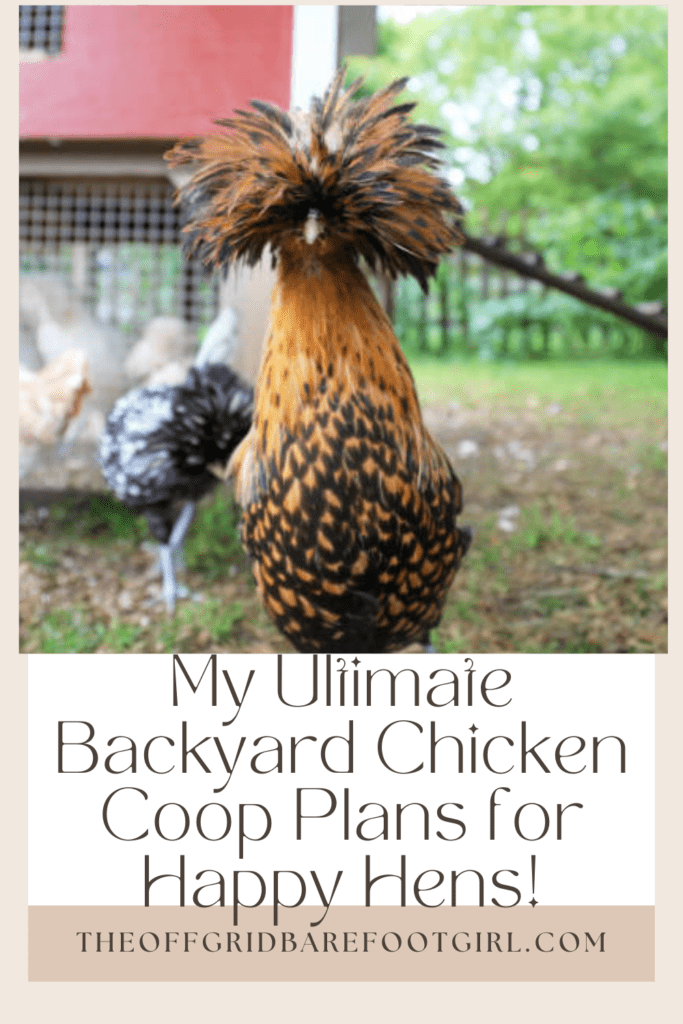
Planning the Perfect Chicken Coop and Run
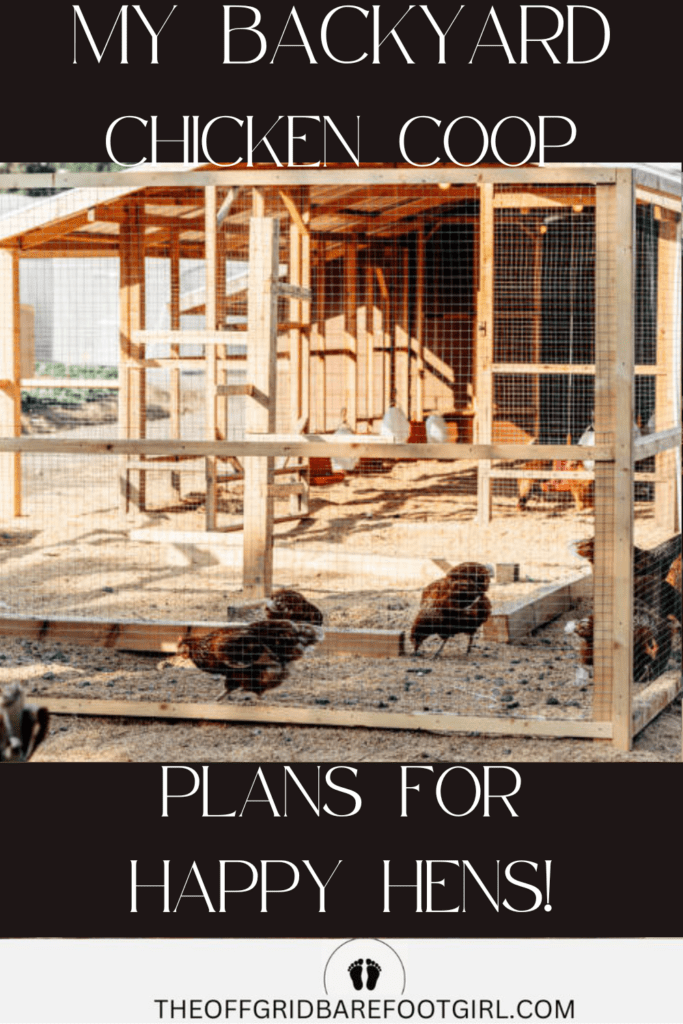
Choosing the Right Location for My Backyard Chicken Coop
Behind the Garage in the Backyard
When deciding where to place my chicken coop, I wanted a spot that was convenient, sheltered, and safe for my hens. I chose to set it up right behind my garage, in the corner of my backyard. This spot provides a natural windbreak, some shade, and easy access for me to check on my flock every day.
Plus, it keeps the coop close to the house while still giving the hens plenty of space to roam. Positioning it here also helps with security—it’s not too exposed, which can help deter predators. Finding the perfect location is key to raising happy, stress-free chickens, and I think this setup will be just right!
Pre-Made Coop or DIY?
Why I Went with a Rebuild
When it came to choosing a coop, I had two options: build one from scratch or buy a pre-made one and modify it. I’ll be honest—I’m more of an assembler than a builder, so the choice was pretty clear for me!
I found a sturdy wooden playhouse that I plan to convert into a coop with a few modifications. I read reviews from others who turned similar structures into cozy homes for chickens, ducks, and even bunnies, so I know it can be done! This approach saves me time, eliminates the stress of precise carpentry, and lets me focus on creating a functional, comfortable space for my flock.
Key Features I Needed in an Amazon-Ready Chicken Run
Since I’m going with a pre-made chicken run, I had a few non-negotiables.
- First, space—I wanted a large enough area for my hens to move around freely.
- Second, a secure covering to protect them from predators and bad weather. I also made sure it had a large door for easy cleaning and access.
- And finally, durability—a flimsy run wouldn’t cut it, so I chose a heavy-duty metal one that will stand up to wind, snow, and everyday wear.
Amazon had several great options, and I found one that checked all my boxes. Now, I just need to set it up and make sure my girls love it!
How Much Space My Flock Needs to Be Happy and Healthy
Chickens need room to roam, and I want to make sure my 4 to 6 hens have plenty of space to live their best lives. A general rule is 3-4 square feet per chicken inside the coop and 8-10 square feet per hen in the run.
Since I’m using a pre-made coop and a large run, my flock will have more than enough space to spread out, scratch around, and enjoy their day. Overcrowding can lead to stress and pecking problems, so giving them enough room is key.
With my setup, my hens will have a cozy, spacious home where they can lay eggs, dust bathe, and just be happy chickens!
Calculating the Space for the Coop
To find the square footage of the Evermeadow Wooden Playhouse (which is 41″ wide x 38″ deep), follow these steps:
- Convert inches to feet:
- 41 inches ÷ 12 = 3.42 feet
- 38 inches ÷ 12 = 3.17 feet
- Multiply width by depth to get square footage:
- 3.42 ft × 3.17 ft = 10.84 square feet
So, the floor space of this playhouse is approximately 10.84 square feet—enough for about 3-4 chickens comfortably inside the coop.
If I ever want more chickens, I can just add another coop!
Calculating the Space for the Run
My Large Metal Chicken Coop Run has dimensions of 10 feet x 20 feet, so the square footage calculation is:
10 ft × 20 ft = 200 square feet
How Many Chickens Can This Run Comfortably Hold?
- Chickens need 8-10 square feet per hen in the run for a happy, healthy life.
- My 200-square-foot run can comfortably accommodate 20-25 chickens!
- Since I am planning for 4-6 hens, they will have plenty of space to roam, scratch, and forage. This gives me future options of expanding my chicken flock if I so desire!
This large run ensures my flock will have a safe and spacious environment while protecting them from predators!
Walk-In Chicken Run with Partial Cover
As previously mentioned, for my chicken run, I decided to go with the Large Metal Chicken Coop Run (10x20x6.5FT Walk-in Chicken Run with Cover) instead of building one from scratch. I wanted something sturdy, spacious, and predator-proof without the hassle of sourcing materials and constructing it myself.
This pre-made run gives my chickens plenty of space to roam while keeping them safe from neighborhood cats, hawks, raccoons, and other predators. The included weather-resistant cover provides much-needed shade and protection from the elements, which is perfect for my backyard setup.
Choosing this option saved me time and effort while ensuring my flock has a secure and comfortable outdoor space.
Calculated Cost of the Run
$269.99
Small Wood Playhouse Converted Chicken Coop
I chose the Evermeadow Wooden Playhouse (51″ H x 41″ W x 38″ D) as the base for my chicken coop because it’s the perfect size, has a charming design, and saves me the hassle of building from scratch.
While browsing reviews, I saw that others have successfully transformed this playhouse into adorable coops for chickens and ducks—even a bunny hutch! That gave me confidence that with a few modifications, like adding ventilation, nesting boxes, and a secure door, it could make a cozy and functional home for my hens.
I love the idea of repurposing something meant for play into a safe, stylish space for my backyard flock! Plus, this cute little house has adorable windows!
I plan to raise it up on a brick platform since chickens love to roast higher up off the ground. All I would need to add is a little chicken ramp up to the door!
Calculated Cost of the Coop
$329.99
Gathering Supplies for My Setup
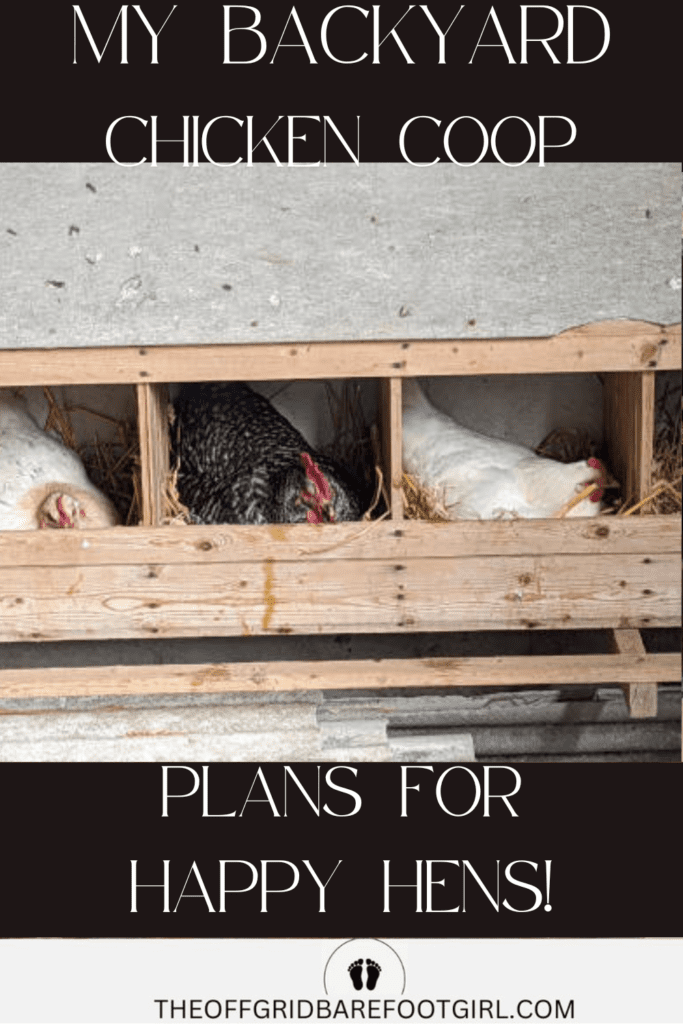
Researching the Best Nesting Boxes for Easy Egg Collection
One of my top priorities when planning my chicken coop is making egg collection as easy as possible. I’ve been researching different nesting box options and found that pre-made nesting boxes from Amazon offer the perfect balance of durability and convenience. I want my hens to feel comfortable and safe while laying, so I’m looking for spacious, well-ventilated options. Easy access for collecting eggs without disturbing my girls is a must!
I chose the 3 Compartment Wooden Nesting Box for my backyard flock because it provides plenty of space for my hens to lay their eggs comfortably while keeping them safe from damage. Since it’s wall-mounted, it helps save space inside the coop and keeps the nesting area clean and organized.
I love that the design prevents eggs from rolling out and breaking, making egg collection much easier. This sturdy and well-ventilated setup is perfect for ensuring stress-free egg-laying for my hens while keeping my coop tidy! Plus, can you imagine how adorable this nesting box will be once I add cute little drawback curtains? The girls deserve to be cozy!
Comfortable Nesting for Happy Hens
To keep my hens cozy and their eggs clean, I’m using Eaton Pet and Pasture Premium Laying Hen Nesting Pads. These 13 x 13-inch pads are sustainably harvested in the USA and provide a soft, cushioned surface for my hens to lay their eggs comfortably.
Not only do they help prevent egg breakage, but they also make cleaning the nesting boxes easier by reducing mess and moisture buildup. A happy hen lays better eggs, and these nesting pads are a simple way to keep my flock comfortable and productive!
Finding Sturdy and Comfortable Roosting Bars
Roosting bars are essential for keeping my chickens happy and healthy at night. I’ve been searching for sturdy options that will support them while they sleep, and luckily, the chicken run I purchased already includes built-in roosting bars—one less thing to worry about!
For inside the coop, I’m considering wooden bars that are wide enough for their feet to rest comfortably without causing foot injuries. A good roosting setup ensures my hens stay warm, secure, and relaxed overnight.
Selecting Feeders and Waterers for Easy Daily Care
Since I want to keep daily chicken care as simple as possible, I’ve been looking into no-spill automatic feeders and automatic waterers. I love the idea of mounted feeders that prevent waste and gravity-fed waterers that keep the water clean and fresh.
Why I Chose an Automatic Chicken Feeder for My Flock
Feeding my chickens efficiently is a top priority, which is why I went with this Automatic Chicken Feeder System with a 30lb capacity. Made from durable galvanized metal, it’s designed to withstand the elements while keeping feed dry and protected from pests. Since it holds a large amount of feed, I won’t have to refill it constantly, making daily care much easier.
Plus, it helps reduce waste by preventing chickens from scratching out excess feed. Whether I’m home or away, I can trust that my flock has a steady food supply without the hassle of constant refilling!
A Reliable Watering Solution for My Flock
Keeping my chickens hydrated is just as important as feeding them, which is why I chose the Farm Tuff Durable Top Fill Hanging Poultry Waterer with a 7-gallon capacity.
This automatic waterer makes daily care simple, as the top-fill design allows for easy refilling without the hassle of flipping it over. Since it’s made from durable plastic, I don’t have to worry about rust, and the hanging feature helps keep the water clean by preventing dirt and bedding from getting inside.
Although, I think I might just prop it up on some bricks. With a large capacity, I know my flock will have fresh water available all day, even during the hot summer months!
Essential Coop Accessories: Lighting, Heating, and Predator Deterrents
Solar Wall Lanterns for Added Security and Style
To enhance security and visibility around my chicken coop, I’m mounting these solar wall lanterns on the outside of the coop and run. With motion sensor activation and dusk-to-dawn lighting, they’ll help deter predators while providing a soft, decorative glow at night.
Their waterproof design makes them perfect for outdoor use, and since they’re solar-powered, there’s no need for wiring or maintenance. These lights add both functionality and charm to my setup, keeping my flock safe while making the coop look great!
Keeping My Chicken Coop Warm and Cozy Without Electricity
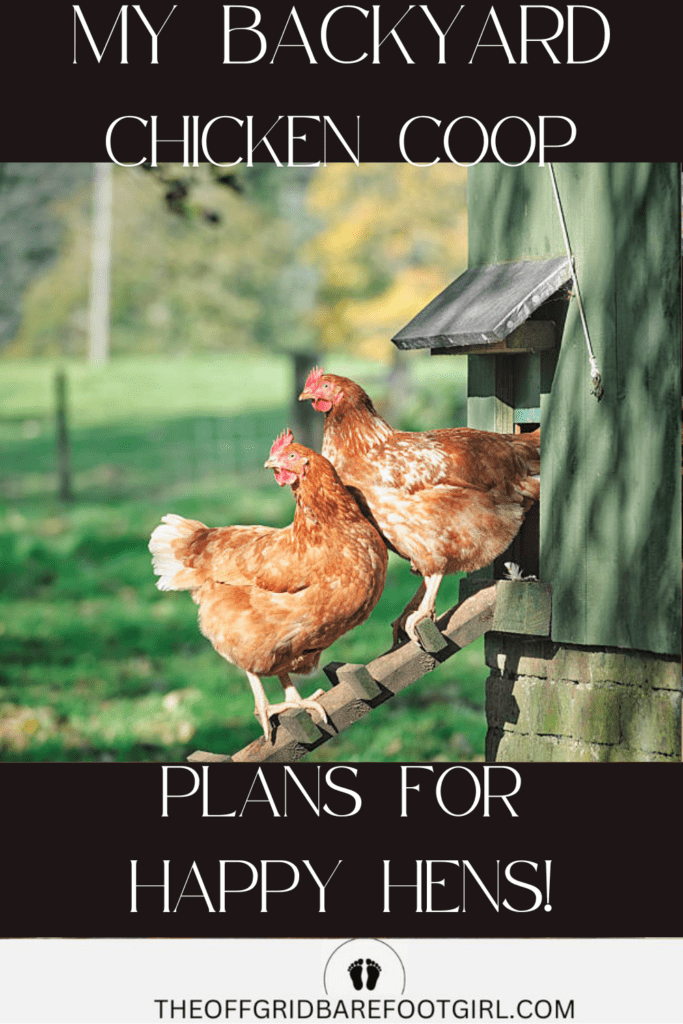
Since I live in northern Utah, winters can be harsh, so I’m considering off grid options to keep the coop from freezing.
Since I’m avoiding electric heaters, I’m focusing on natural insulation and smart coop design to keep my hens warm during the colder months. Here are some ways I plan to keep my coop cozy:
- Deep Litter Method – By layering straw or pine shavings and letting them naturally compost, the coop will generate gentle heat while keeping odors down.
- Proper Ventilation – While it might seem counterintuitive, good airflow is key to preventing moisture buildup, which can cause frostbite. I’ll position vents high up to allow for fresh air without drafts.
- Insulating the Coop – Adding extra straw bales around the outside, using foam board insulation, and sealing any cracks will help keep warmth inside.
- Cozy Roosting Bars – Since heat rises, I’ll position the roosting bars higher up so my hens can snuggle together for shared body warmth.
- DIY Wind Barriers – Wrapping parts of the run with clear plastic sheeting or tarps will block cold winds while still letting in sunlight.
- Warm Treats – On extra chilly nights, I’ll offer warm oatmeal, scratch grains, or cooked squash to help them generate body heat from digestion.
By combining these methods, I can ensure my chickens stay warm, happy, and healthy all winter long—without relying on electricity!
Keeping My Coop Safe with Solar-Powered Predator Deterrents
To add an extra layer of security to my chicken coop, I’m using the Triumpeek Animal Repeller—a solar-powered predator deterrent with glowing red LED lights. These lights mimic the eyes of a larger predator, scaring away nocturnal threats like foxes, raccoons, skunks, coyotes, and even deer. I’ll mount them around my coop and run to keep my flock safe at night without needing electricity or constant monitoring. It’s an easy, low-maintenance way to deter unwanted visitors and give me peace of mind!
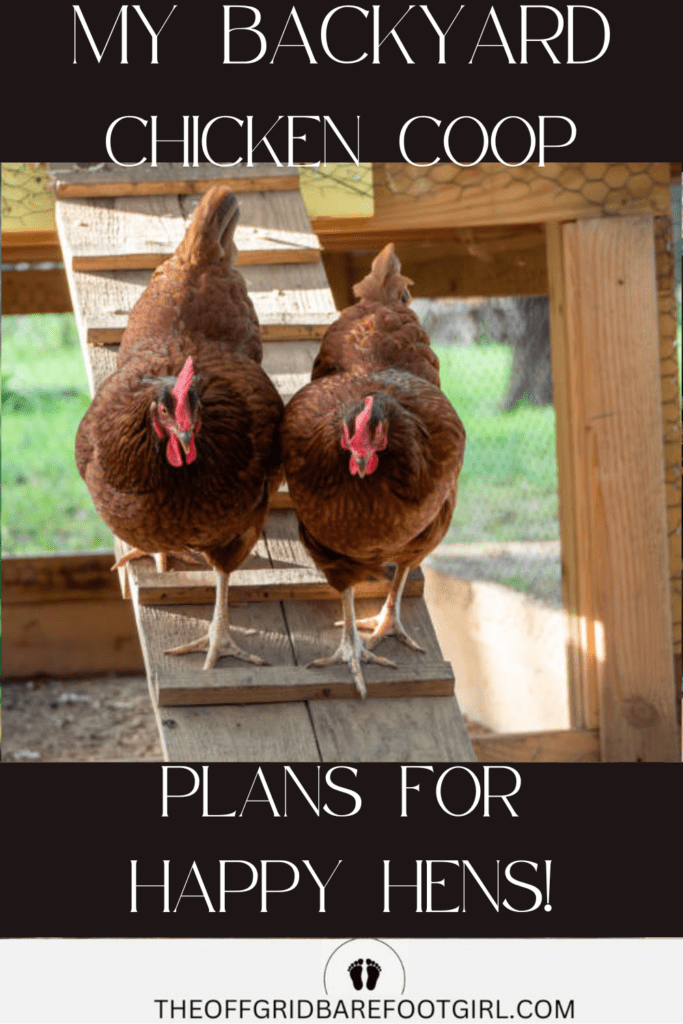
Fun Chicken Toys for Boredom Busters
Happy chickens lay more eggs – Preventing boredom reduces stress and unwanted behaviors like feather pecking. Keeping my chickens entertained is important for their well-being! Here are some fun chicken toys and boredom busters that I plan to keep my flock happy and engaged:
Hanging & Pecking Toys
- Chicken Xylophone – A fun, musical toy for pecking.
- Hanging Cabbage or Lettuce – Tie it up for a swinging snack.
- Chicken Pecking Ball – Fill with treats for a fun challenge.
- Treat Dispenser Toys – Chickens have to work to get the treats out!
- Chicken Wind Chime – Chickens are musical!
Foraging & Scratching Fun
- DIY Treat Logs – Drill holes in a log and stuff with mealworms.
- Straw Bale Pile – Chickens love to scratch and dig through it.
- Scattering Treats – Hide mealworms or scratch grains for them to hunt.
- Pumpkin or Watermelon Halves – A delicious, peckable treat.
Climbing & Perching Fun
- Chicken Swing – A fun way to keep them active.
- Old Ladders or Branches – Great for natural perching.
- Mini Jungle Gym – Add stumps, crates, or ramps for climbing.
- Playset – Swings and a perch.
Dust Bath & Digging Areas
- Sand Pit with Ash & DE – Helps keep mites away and is fun to roll in. Herbal Chicken Dust Bath
- Compost Pile – Chickens love digging through it for bugs.
Shiny & Moving Objects
- Mirrors – Chickens are curious about their reflection!
- Hanging Loofah Shredder – Provides fun shredding stimulation.
Adding a few of these to my chicken run will help keep my flock entertained, prevent pecking issues, and ensure they stay happy and active!
Creating a Clean and Comfortable Environment
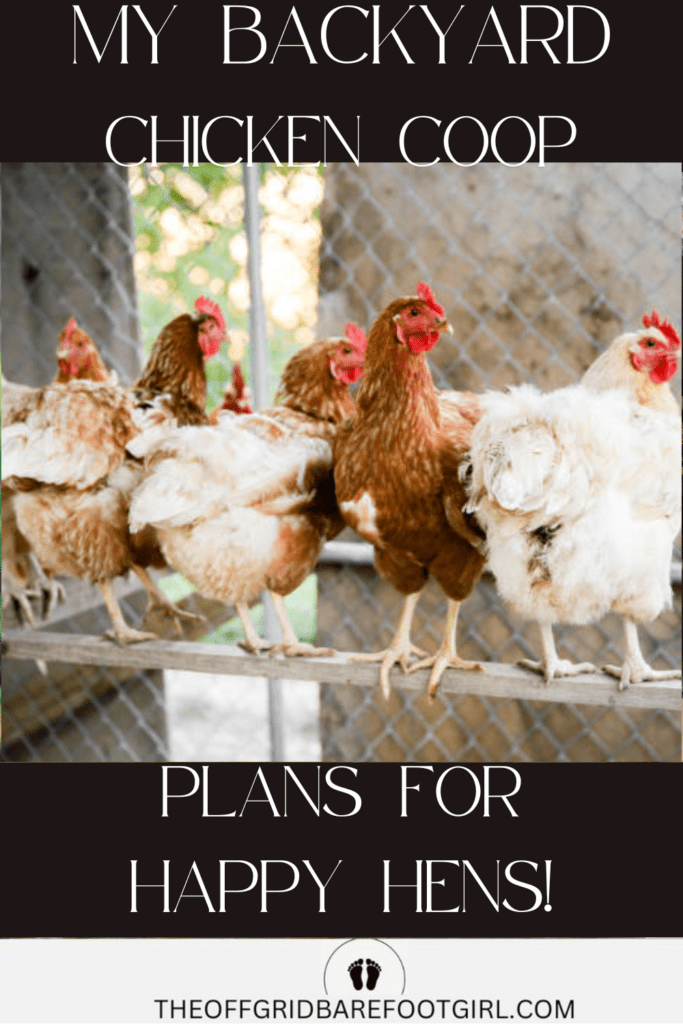
Bedding Options Available on Amazon
When it comes to bedding for my coop, I want something that’s absorbent, easy to clean, and comfortable for my hens. Amazon offers a variety of options, including pine shavings, hemp bedding, and straw.
Pine shavings are a popular choice because they help control moisture and odor, while hemp bedding is super absorbent and lasts longer. Straw can work well too, especially in nesting boxes. I’m experimenting with different types to see what works best for my setup and keeps my coop as fresh as possible!
Planning an Easy Cleaning Routine to Maintain a Healthy Coop
Keeping my coop clean is a top priority because a dirty coop can lead to illness, pests, and unhappy chickens. My plan is to use the deep litter method, adding fresh bedding regularly and doing a full clean-out every few weeks. This will be a great build-up collection for the compost pile!
With a routine in place, I can keep my hens happy and my workload manageable!
Exploring Odor Control Solutions to Keep Things Fresh
No one wants a smelly chicken coop, so I’m looking into natural ways to control odor. Proper ventilation is key, along with using highly absorbent bedding like hemp or pine shavings. I’ve also researched that adding sweet PDZ (a coop refresher) or diatomaceous earth helps absorb moisture and neutralize ammonia smells.
Keeping the coop dry and scooping out waste regularly will go a long way in keeping things fresh for both my flock and my backyard!
Seasonal Preparation: How I Plan to Keep My Hens Comfortable Year-Round
Each season brings different challenges for chicken care, and I’m preparing ahead of time to keep my hens safe and comfortable.
- In the winter, I’ll add extra bedding for warmth, use wind-blocking tarps, and ensure they have access to fresh, unfrozen water.
- In the summer, I’ll provide plenty of shade, add frozen treats to their diet, and keep their water cool and full.
- Spring and fall mean extra cleaning to prevent mud buildup and pests.
A little preparation goes a long way in keeping my flock happy no matter the season!
My Thoughts So Far: Lessons Learned and Next Steps
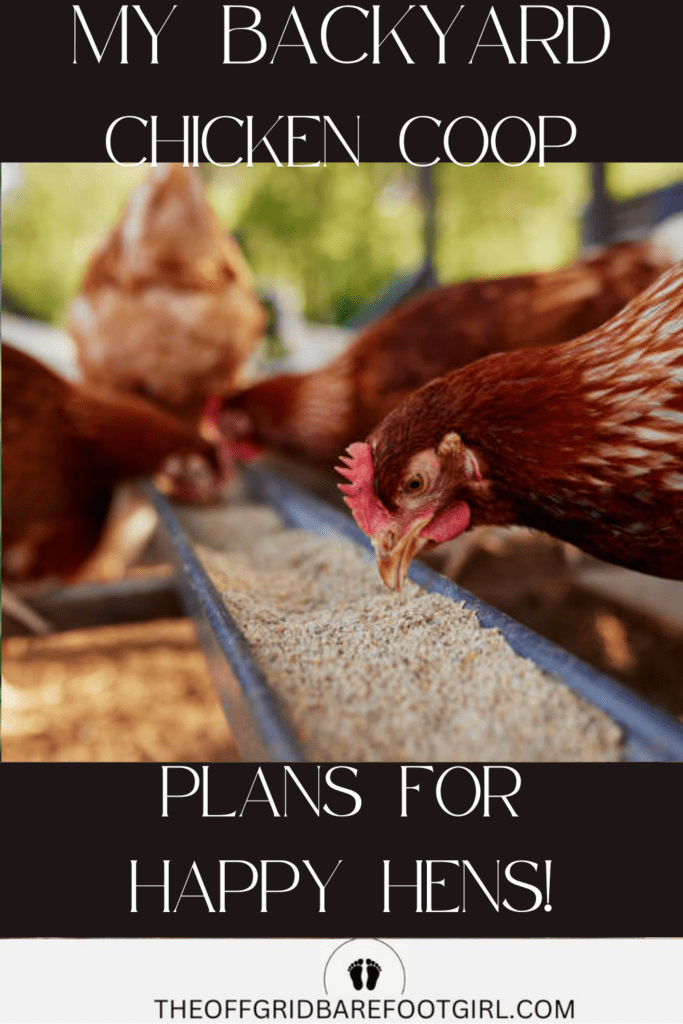
Challenges I’m Facing in the Planning Stage
Planning my backyard chicken setup has been exciting, but it hasn’t been without its challenges. One of the biggest hurdles is figuring out the best placement for everything—where to put the coop, how to set up the run, and making sure it’s all predator-proof.
I also have to balance my budget with quality, making sure I’m getting the best products without overspending. Plus, deciding between DIY and pre-made options has been a bit of a puzzle, but I’m learning as I go!
On another note, I would need to build a walled fence on the side facing my open yard. This is to prevent my small dogs who love to bark and chase things from scaring my chickens by barking at the fence at them. I just know that will happen if I do not have a plan in my design now!
What I’ve Learned About Coop Design and Setup So Far
The more I research, the more I realize how important coop design is for the health and happiness of my hens. Ventilation is a must to prevent moisture buildup, and having enough roosting space ensures they sleep comfortably.
I’ve also learned that easy access to nesting boxes makes egg collection much simpler. The run needs to be spacious and covered for protection from predators and bad weather. Every little detail, from door placement to feeder locations, makes a difference in how smoothly daily care will go.
Products I’m Leaning Towards and Why
I’ve been browsing Amazon and other stores, and I think I’ve narrowed down a few must-have products. For the nesting boxes, I love the idea of wall-mounted ones to save space and keep eggs clean. A galvanized automatic feeder seems like a great way to minimize waste and keep pests out.
I’m also looking at a sturdy, weatherproof chicken run with a large door for easy access. When it comes to bedding, I’m considering hemp for its absorbency and odor control. Every choice feels like an important step toward a well-functioning coop! All of these products I have already mentioned within various areas of this post.
What’s Next on My Journey to Raising Happy Backyard Chickens
Now that I have a plan and some products in mind, the next step is actually putting it all together! I’ll be assembling the coop, setting up the run, and making sure everything is secure.
Then, it’s time to pick out my hens and get them settled into their new home. I know there will be plenty of learning along the way, but I’m excited about this new adventure. Stay tuned—I’ll be sharing updates as I go, and I’d love to hear any tips from fellow chicken keepers!
Conclusion
My Excitement About Getting Started with Backyard Chickens
I can’t wait to finally start my backyard chicken journey! There’s something so rewarding about raising my own flock—fresh eggs, happy hens, and a more self-sufficient lifestyle. I’ve spent so much time researching coops, feeders, bedding, and all the little details that go into making a comfortable home for my chickens.
Now, I’m ready to put all that knowledge into action. The idea of waking up to collect fresh eggs and watching my hens scratch around the yard is exactly the kind of simple joy I’ve been looking forward to!
Encouragement for Others Who Are Also in the Planning Phase
If you’re in the planning phase like me, I just want to say—stick with it! It might feel overwhelming at first with all the decisions to make, from coop size to feed choices, but take it one step at a time. There’s no perfect way to do it, and you’ll learn as you go.
Every backyard chicken keeper starts somewhere, and the most important thing is creating a safe, happy space for your flock. Don’t stress over getting everything right from the beginning—just start, and you’ll figure out what works best for you along the way!
This is just the beginning of my backyard chicken adventure, and I’d love for you to follow along! I’ll be sharing my experiences—the wins, the challenges, and all the little lessons in between. Whether you’re already a seasoned chicken keeper or just dreaming about getting started, I’d love to hear your thoughts and tips.
Let’s learn together and create the best life for our flocks. Stay tuned for updates on my coop setup, product reviews, and plenty of fun chicken-keeping stories!
Resources: Here are some helpful resources for further information.
- Chicken Coops – By BackYard Chickens
- 38 DIY Chicken Coop Plans & Ideas – By Country Living Magazine
- Custom Backyard Chicken Coops – By Carolina Coops
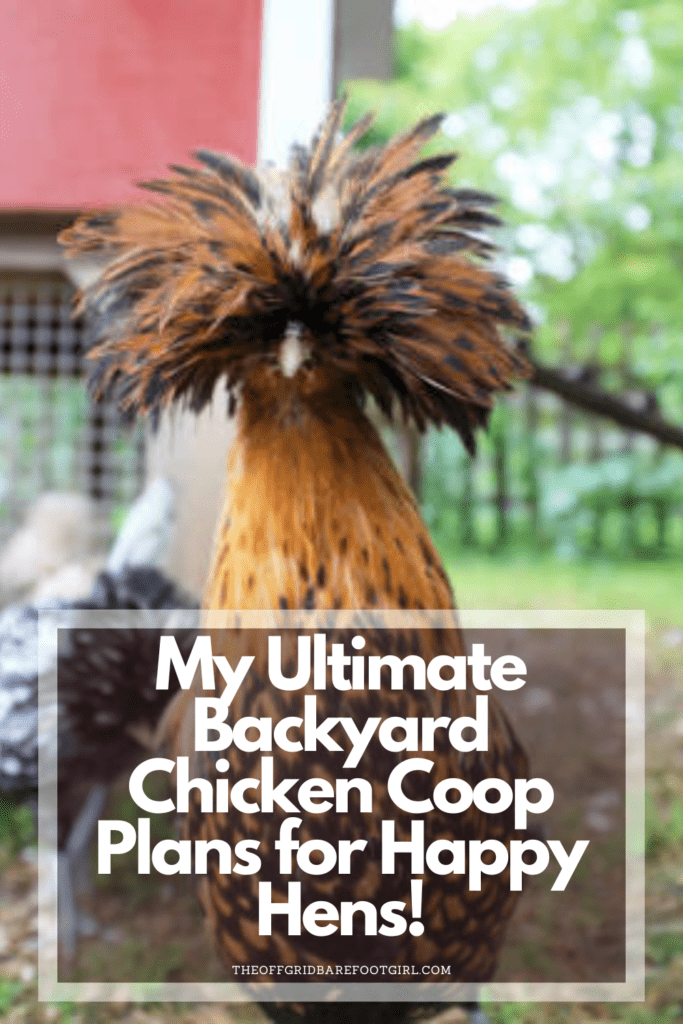
Frequently Asked Questions
1. How many chickens do you plan to keep?
I’m planning to start with 4 to 6 hens, which is a great number for a small backyard flock. This will provide plenty of fresh eggs while keeping the coop and run manageable.
2. What type of coop are you using?
I’m using a pre-built chicken coop that I’ll be modifying to fit my needs. Since I’m more of an assembler than a builder, this option makes the setup process easier while still allowing me to customize it for my flock’s comfort.
3. What are some must-have accessories for your coop?
I’m focusing on essentials like sturdy roosting bars, nesting boxes for easy egg collection, an automatic feeder and waterer, and predator deterrents for safety. I’m also adding boredom busters like pecking toys and dust baths to keep my chickens entertained.
4. How will you keep your coop warm in the winter?
Since I’m trying to avoid using electricity, I’ll focus on insulating the coop with deep bedding, blocking drafts while ensuring proper ventilation, and using natural heat sources like composting litter and covered perches to keep my hens cozy all winter long.
Summary
I hope I have inspired you to enjoy a backyard chicken coop with these tips and products.
If you were encouraged by this post, I invite you to check out my FREE Printables Page for fun free printables, planners, and charts.
ENTER MY FREE Printables Page HERE
Here are some more of my backyard chicken coop inspiration posts to check out!
How to Build a Backyard Homestead
Blessings,
The Off Grid Barefoot Girl

